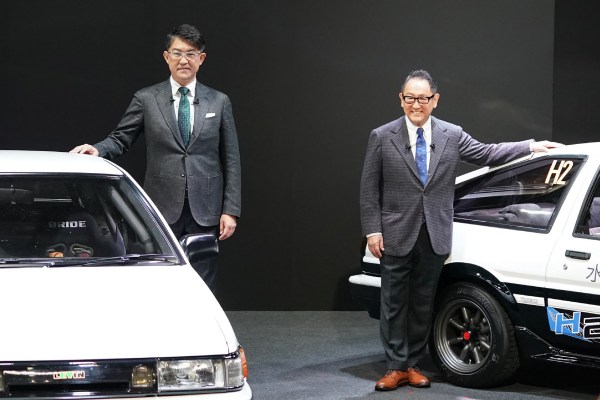Toyota’s president, Akio Toyoda, surprised the automotive world this week by announcing he would resign his position and hand the reins over to Koji Sato, who currently helms the company’s Lexus and Gazoo Racing divisions.
But Toyoda isn’t going far. The 66-year-old isn’t retiring outright, but instead retiring to the boardroom, where he’ll take over the role of chair.
Insiders aren’t expecting Toyoda to be hands-off, either. One executive said that Toyoda was about to embark on a period of “cloister rule,” a period in Japan’s history where the emperor retired to a monastery without actually ceding power.
If that’s the case, then the shakeup in Toyota City might not be much of a shakeup at all.
Toyoda’s resignation might have come as a surprise, but it wasn’t entirely unexpected. The executive has come under fire in recent years for misreading the market when it comes to decarbonization. Toyoda has consistently downplayed the role electric vehicles have to play in decarbonizing transportation, preferring instead to tout his company’s hybrid-heavy lineup and its bet on hydrogen as a future fuel source. Investors watched in dismay as competitors ramped up their EV efforts. Their frustrations — and the company’s lackluster stock performance — may have tipped the scales in favor of Toyoda’s retirement.
Part of investors’ angst comes from the fact that Toyota once led the pack. The first Prius model was released in 1997, well ahead of most competitors, and the revamped second generation became an object of desire among environmentally minded celebrities. Since then, though, the automaker has been happy to rest on its laurels, relying on the hybrid halo to burnish its image.
In recent years, though, that halo has lost its shine. Consumers and regulators alike have embraced electric vehicles. In many markets, hybrids alone won’t be enough for Toyota to meet emissions standards, and hydrogen-powered cars and light trucks are still decades away from mass market acceptance. Meanwhile, other automakers like Hyundai and Kia stole Toyota’s Prius playbook, rolling out flagship EVs packed with practical features and gussied up with signature styling that makes them immediately recognizable.
As a result, Toyota was practically forced to release an EV, which has been greeted with ho-hum reviews. In an attempt to regain control of the narrative, the company announced 30 EV concepts (that were suspiciously light on details) and touted significant investments in battery plants.
But it wasn’t enough, mostly because Toyoda couldn’t stop complaining about EVs, saying in 2020 that going all-in would cause the car industry “to collapse.” More recently, after reportedly mulling a reboot of the company’s EV strategy, he again threw cold water on the concept, saying that a “silent majority” of automotive executives would rather sit out the EV race.
It’s impossible to know whether comments like those undermined Toyoda’s credibility as president of the company, but it’s unlikely that they helped. By leaving the role, he might be hoping to change the narrative and give Toyota some breathing room. He might succeed in that. But it’s unlikely that Sato, a 30-year veteran of the company, is going to throw out the playbook, especially with Toyoda watching his every move from the boardroom.
If this is going to be a retirement in name only, then investors may not find the relief they were seeking.
